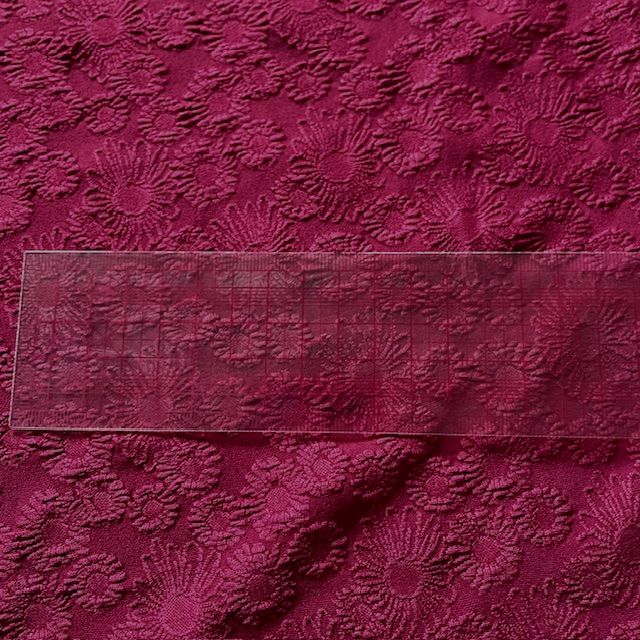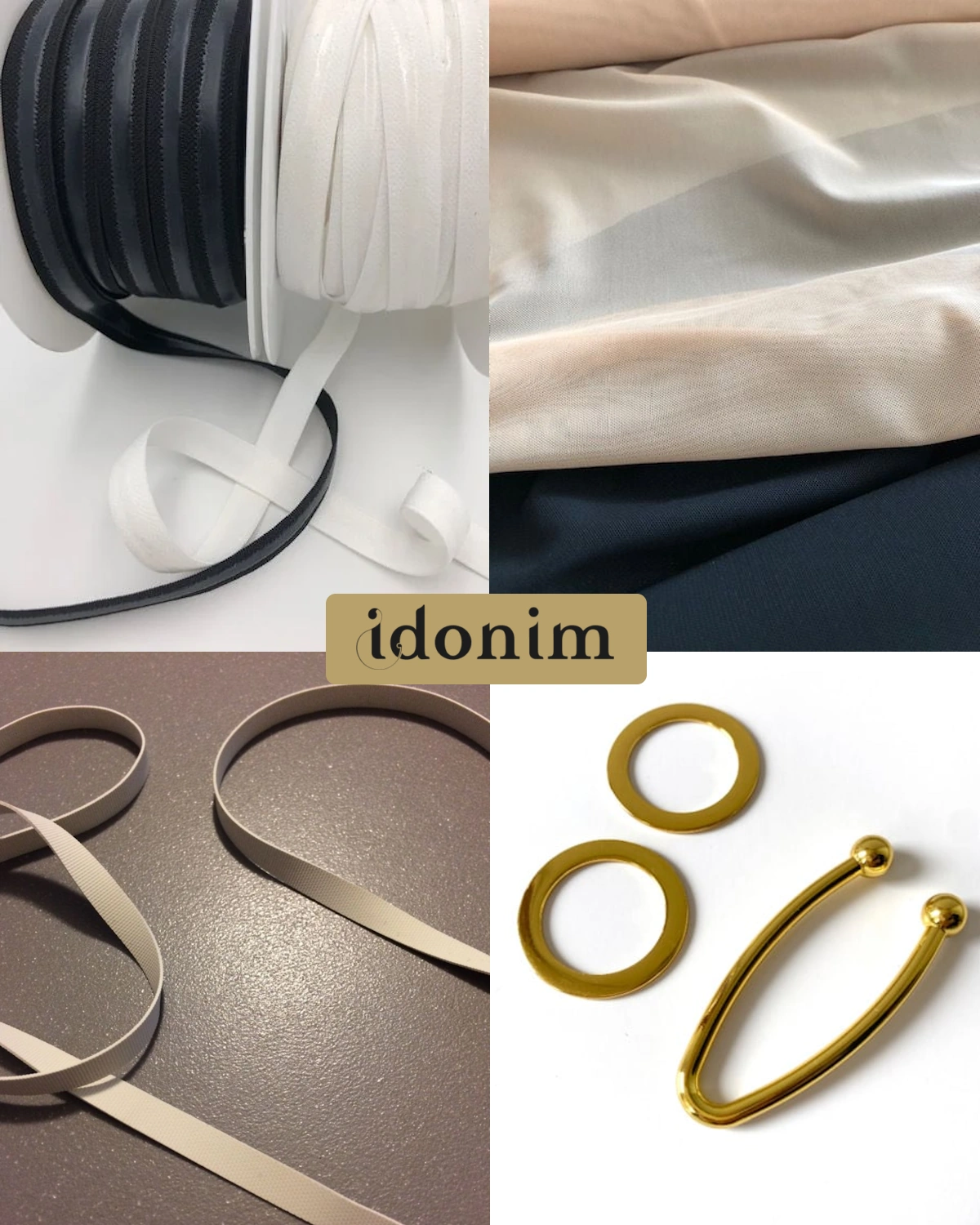
The essentials for your swimming costume.
To make your swimming costume, you will need
- The fabric
- The lining
- The laminate
- Accessories
- Thread, needles and machine
What types of fabric should I choose?
Swimwear fabrics are made up of polyamide or polyester withelastane (or spandex or lycra). You will recognise them by the name "Lycra", which is a registered trademark like spandex.
See our collection of lycra fabrics for your creations
These are textiles that have technical characteristics to resist salt, chlorine, UV...
AttentionFor the same fabric (same reference and supplier, etc.) UV resistance may vary according to colour.
Whether plain or printed, matt or glossy, flocked, jacquard or lurex, you are spoilt for choice.
There are different qualities. Their weight per m2 and percentage of elastane (SP or LY) may also vary.
I recommend choosing fabrics with at least 200g/m2 and at least 20% of elastane.
The higher the weight of the fabric, the thicker the fabric will be with rebound (see the article on elasticity and rebound). Increasing the weight per square metre will eventually reduce the elastane content.
The lining
The lining may seem like an accessory but it is not to be neglected.
It allows :
- your swimming costume to be opaque when wet. This is especially important on light coloured fabrics. You can do the water test to your fabric: soak a sample in water, stretch it by 10-20% to check its level of transparency and its behaviour once soaked.
- improve comfort depending on the fabric used
- The swimming costume will be all the more qualitative. The use of a lining will make the seam allowances invisible.
The swimming costume liners are 100% nylon/polyamide mesh (or a polyamide fabric with a very low elastane content). They dry very quickly. They are very soft. These fabrics are "soft" (no or very little bounce).
It is also possible to use a fine mesh or light powernet.
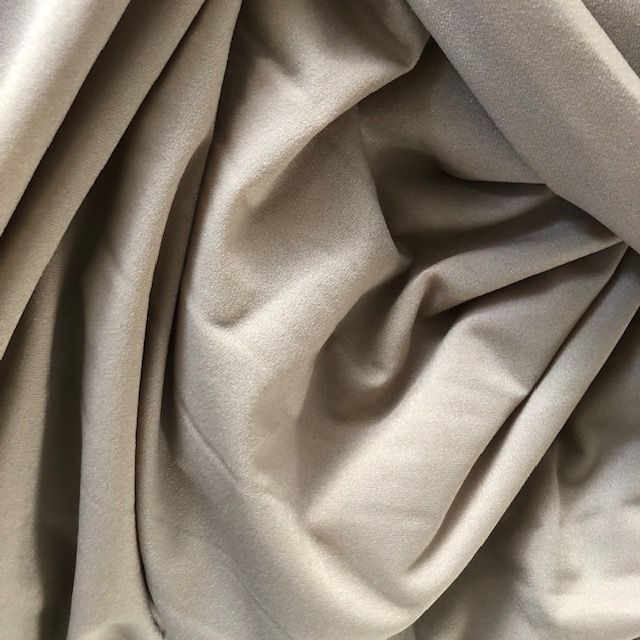

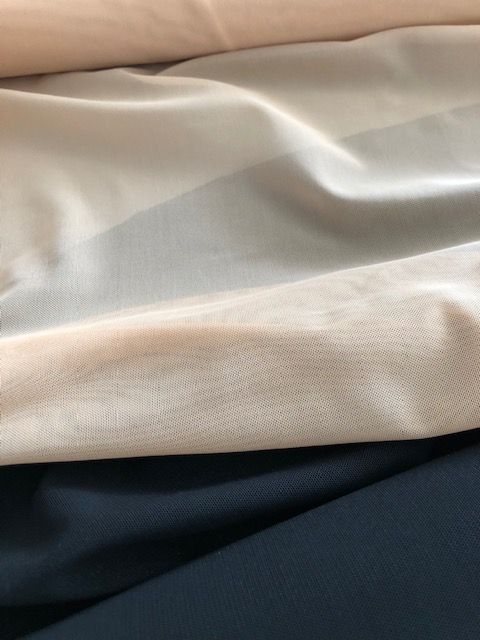
Some people make reversible swimming costumes: same fabric front and back - beware, this has a significant impact on the stretch ratio. In this case you cannot use a pattern designed with a reduction ratio of 12% or 15% (the ratio is more like 7% or less); the pattern may not fit.
In addition, the tension exerted by the bottom fabric will change the behaviour of the textiles and the bottom fabric will "roll" on the right side - you will not have this phenomenon if you use a lining with less or no bounce.
You can do without a lining if the outer fabric used is really opaque.
However, I recommend lining at least the front of the bottom of your swimming costume, even if it is dark, it is more comfortable and qualitative.
For shades such as white and light colours I always double the front and back.
You will find a wide range of colours in the online shop https://idonim-lingerie.fr/.

Elastic bands
Again, the elastics are specific to the conditions of the beach environment.
Laminate is a rubber-like elastic: it can be smooth or extruded.
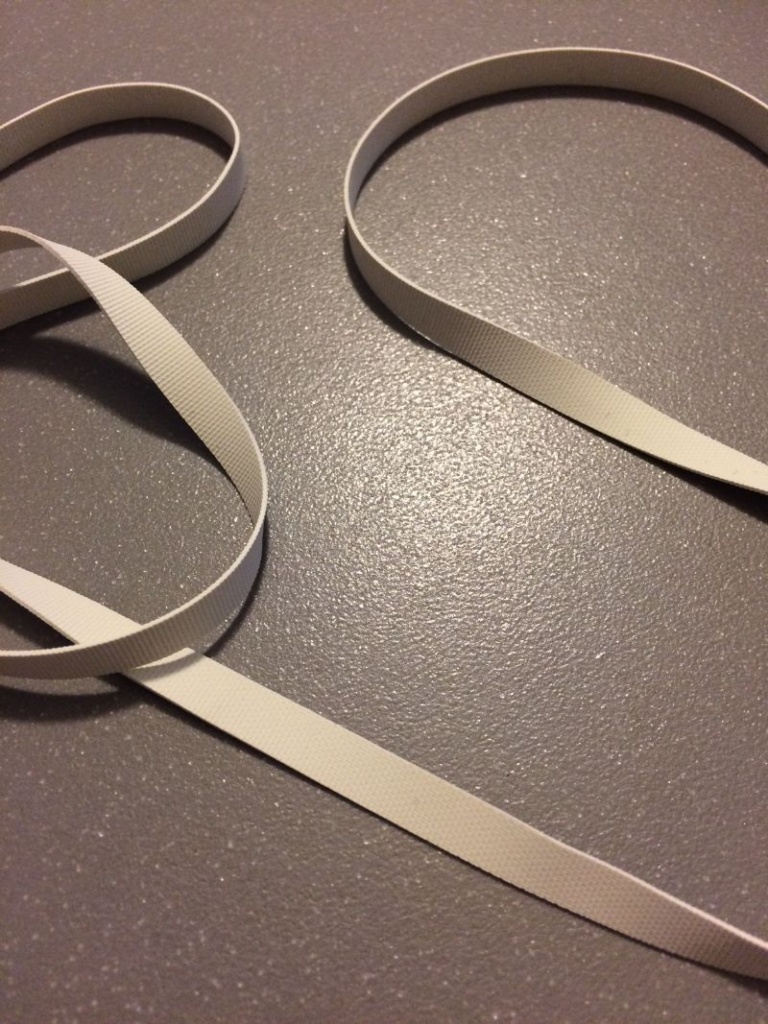
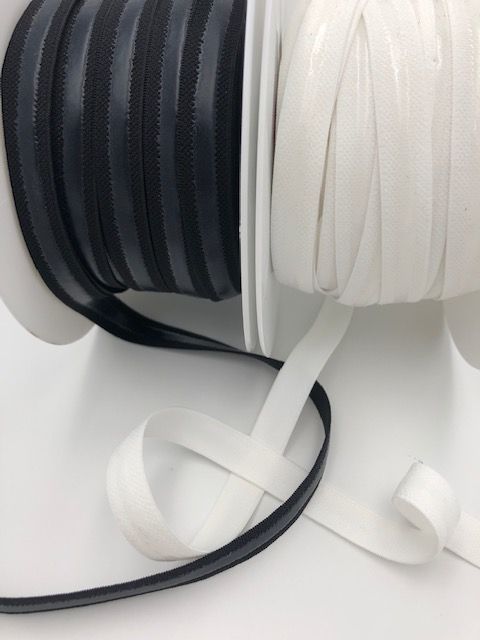
I prefer extruded laminates - I find them stronger, often at least 0.6mm thick and easier to sew.
It is imperative to use laminate to make your swimming costume fit!
Laminate-free jerseys without me; with the wet jersey effect its life span will be very very limited as well.
Elastics used in lingerie will not be suitable for swimwear. They will not resist salt, chlorine, UV rays...
You will also find silicone rubber bands. To use for the realization of the swimming costumes of the bandeau type - it is the elastic which you will put at the neckline - attention not easy to pose because of the silicone band.
Accessories
They can be made of metal or resin. The range is very wide, from clasps to rings, sometimes they are even real jewellery.
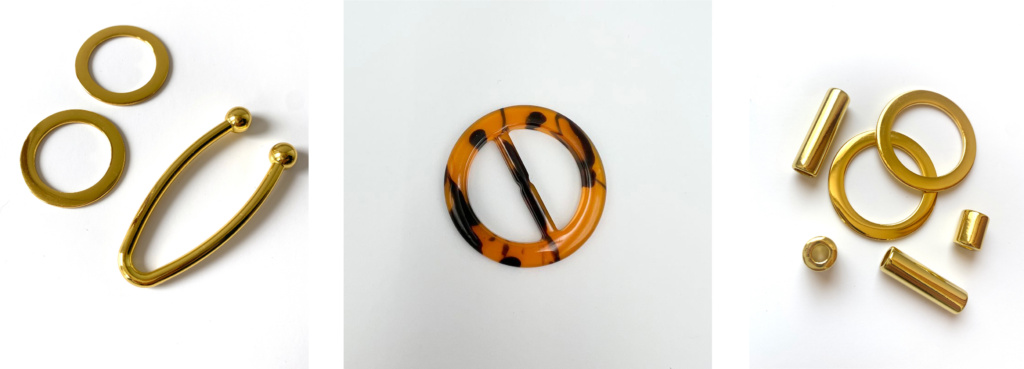
Always choose quality accessories that are suitable for the bathing environment.
Threads, needles and machines
Foam yarn is particularly suitable: it will be softer when wet and will have more bulk. If you find the right shade, ... it will work perfectly with your serger and/or seamer. For a professional result.
Polyester yarn is an all-purpose yarn that's easy to use. It is ideally suited to making swimwear, with a much wider choice of colours. It's still easy to use. I generally recommend starting with this yarn.
If you have a serger and/or a sealer, now is the time to use them. If you only have a simple sewing machine, don't worry, you'll be able to make a swimming costume without difficulty with a simple sewing machine.
Stretch needles are a must.


